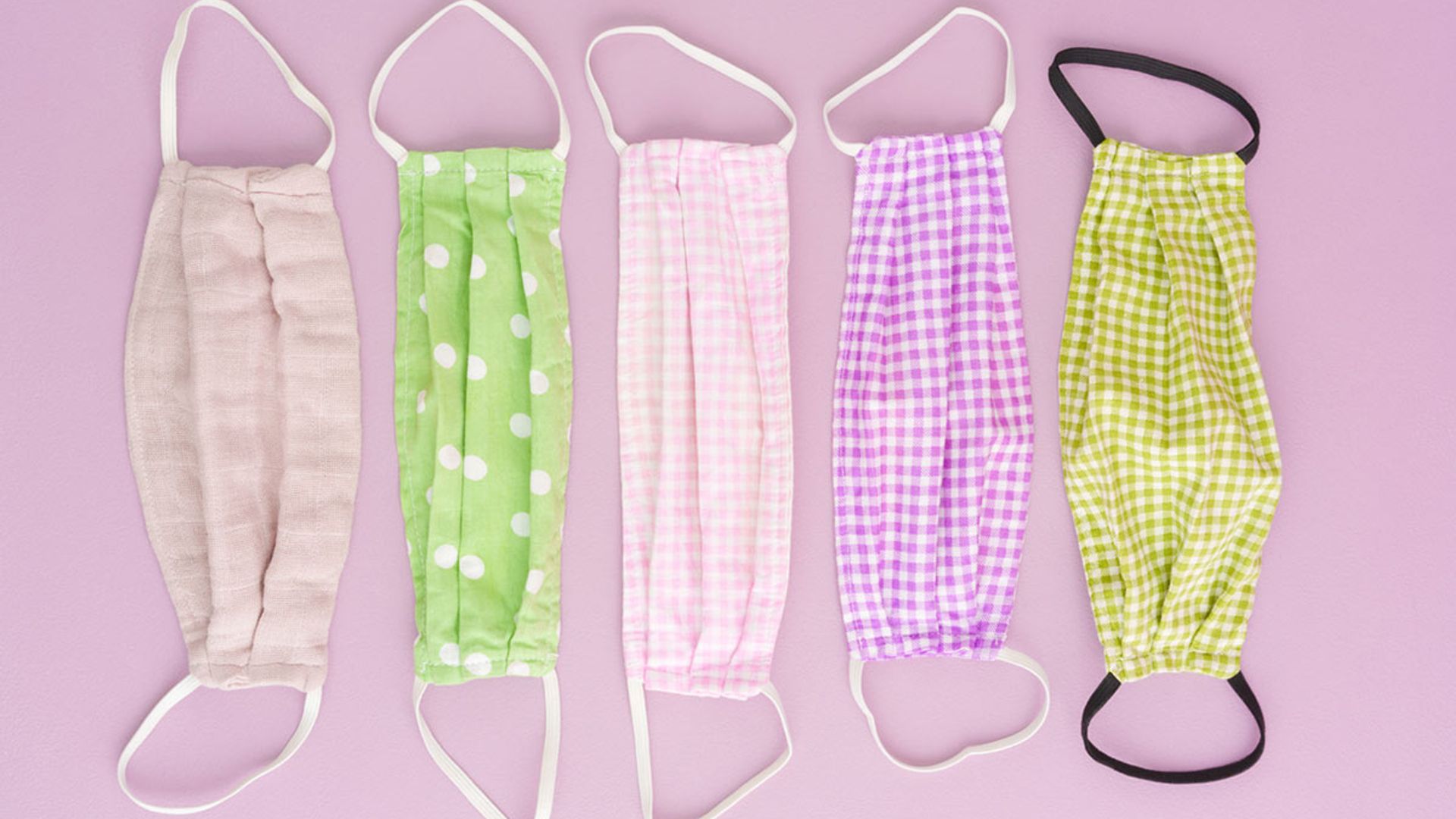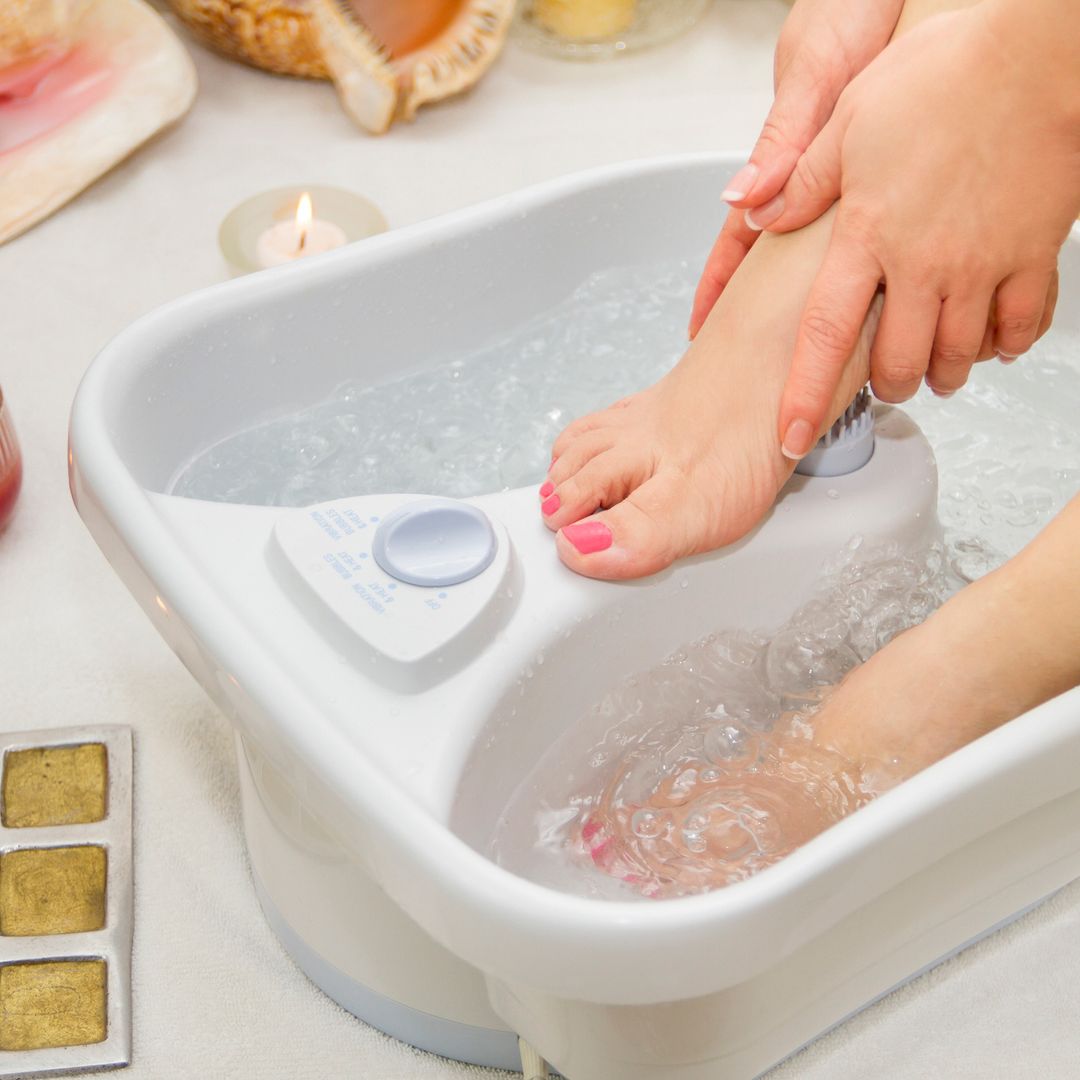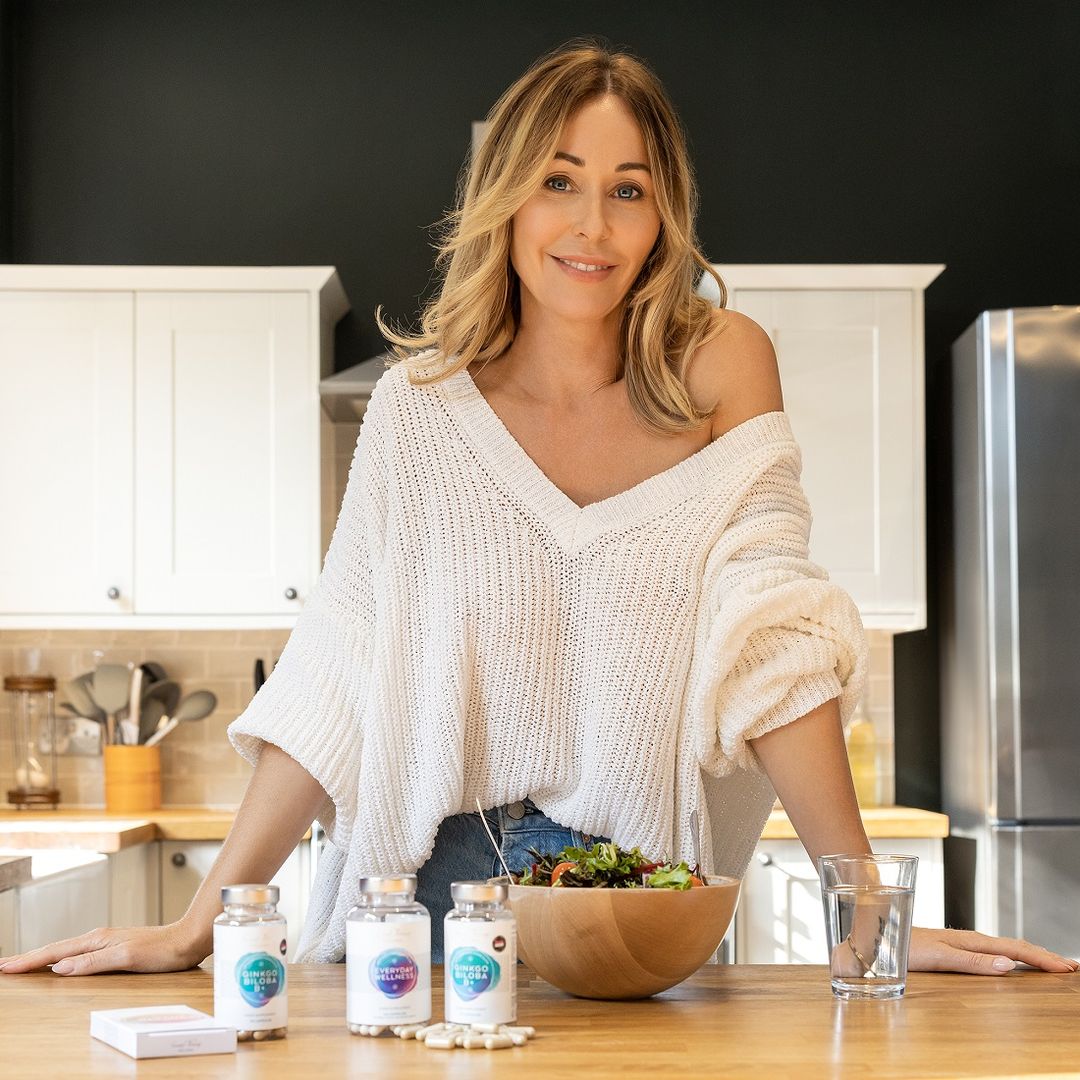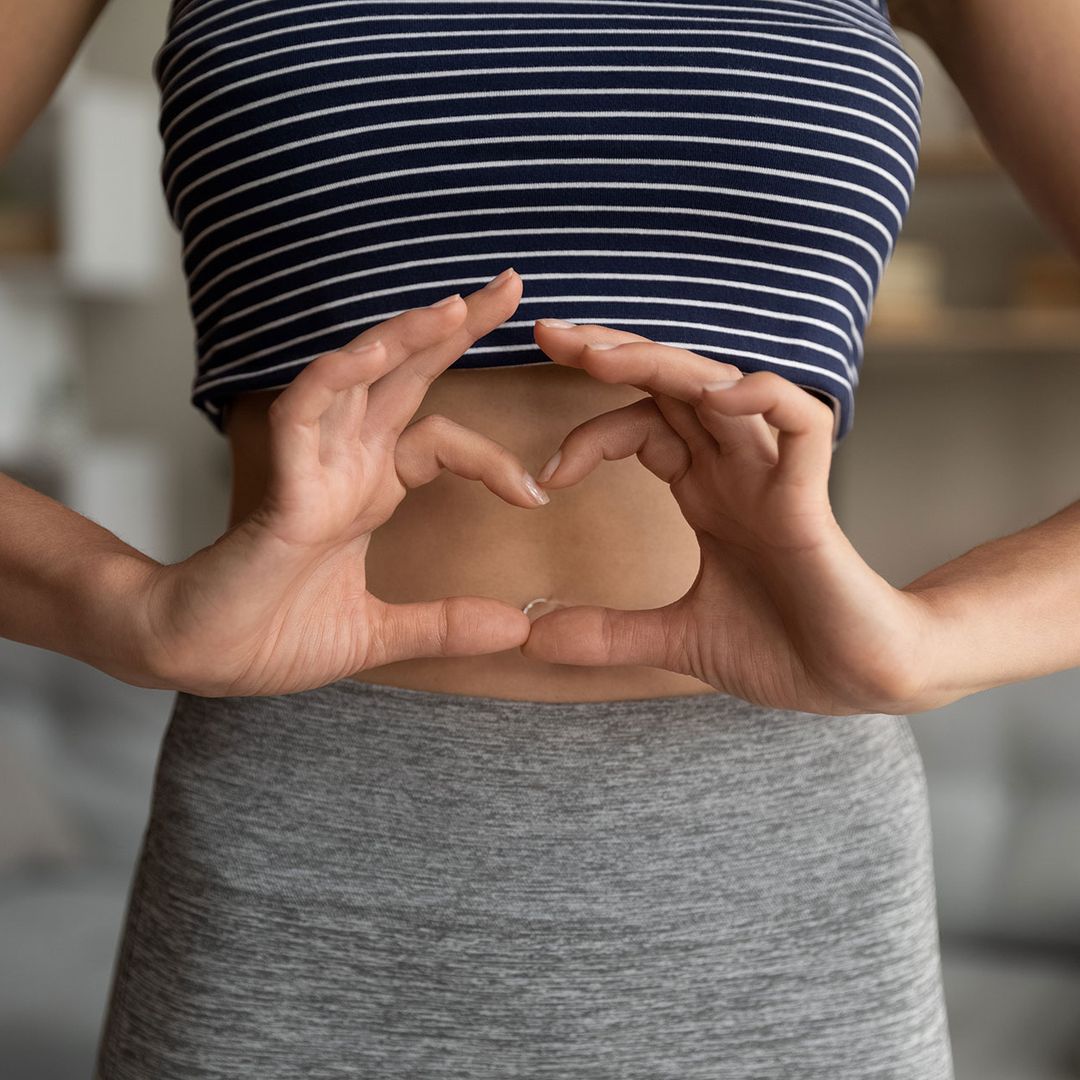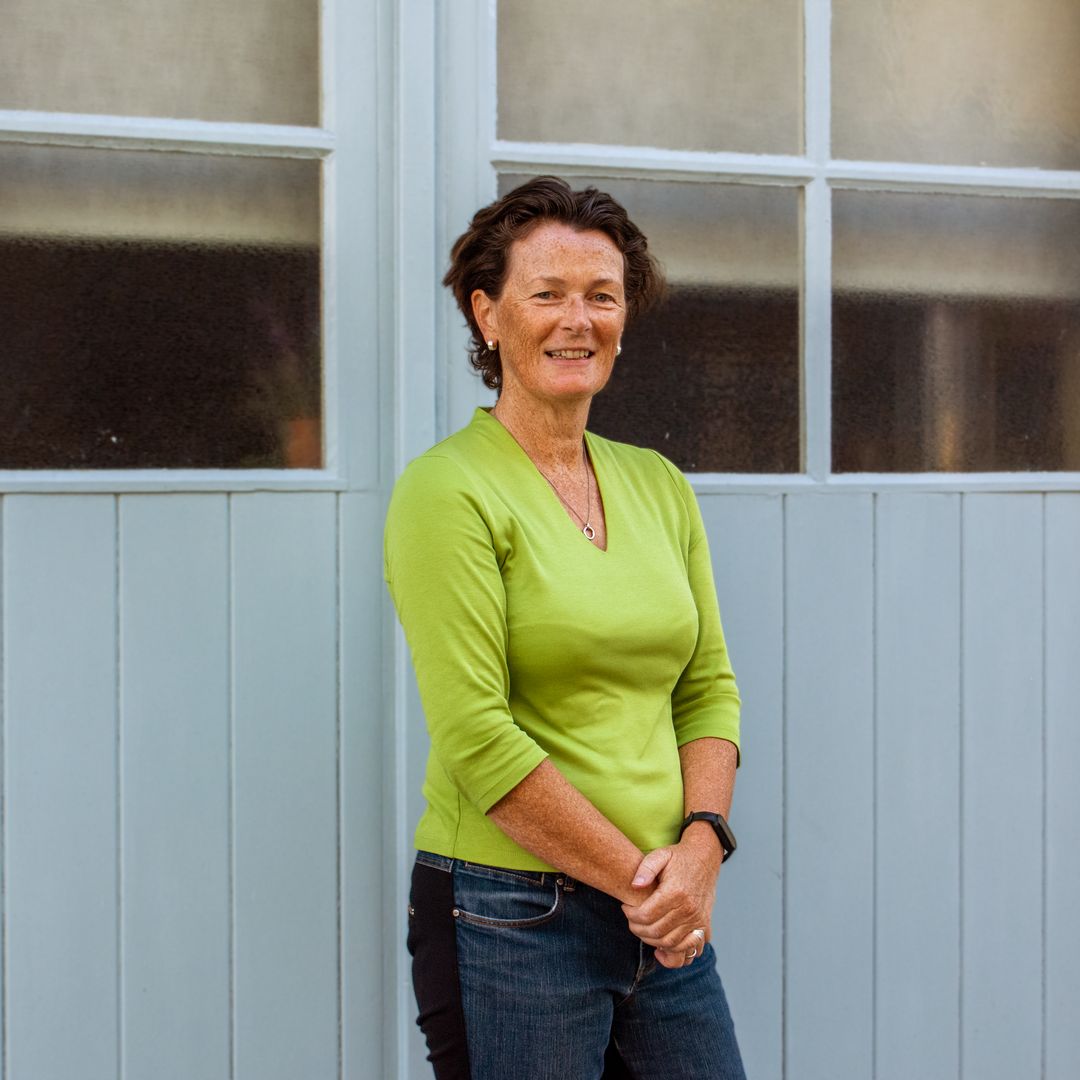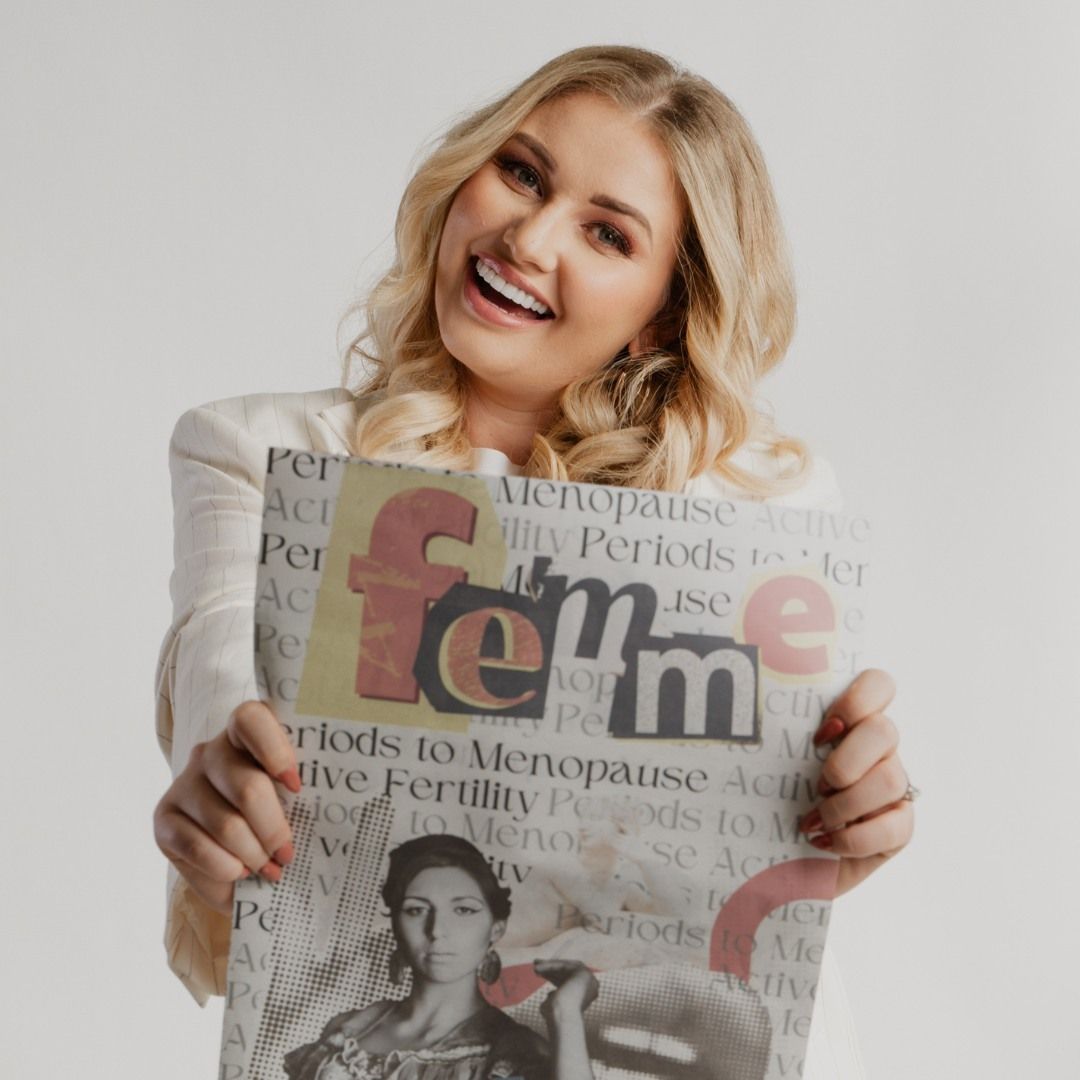As of 15 June, face masks will become mandatory on public transport. Bus, coach, train, tram, ferry and aircraft passengers will all be required to wear a face-covering on their journey in a bid to reduce the transmission of COVID-19. Just one of the many measures being put into place as part of the 'new normal', we're answering all of your face mask questions. Babylon Health's general practitioner, Dr. Claudia Pastides explains the reasons for wearing a face mask, how to correctly make your own face covering, and how to wear face masks responsibly and effectively.
SHOP: Here's where to get a fashionable face mask during the coronavirus crisis
How do face masks work?
"The aim is to form a barrier to virus-filled droplets that are coughed, sneezed or simply breathed out when talking," explains Dr. Pastides. "Face coverings are an additional measure in the fight against COVID-19. When wearing one, it is still just as important as always to wash your hands regularly, avoid touching your face, practice social distancing and stay at home if you have symptoms."
Why is it important to wear a face mask?
"Using a homemade mask helps to protect others in your community. And critically - it ensures supplies of medical masks continue reaching those that need them most. Surgical face masks and masks used as part of personal protective equipment (PPE) should be reserved for use by healthcare professionals. Such masks need specialist fitting. They also tend to be single-use, non-recyclable and expensive. Although cloth masks may not stop the individual wearing them from becoming infected, there is a growing body of evidence that they could help prevent spread by people with COVID-19 who don't have symptoms."
Is a homemade mask as effective as a medical mask?
"The truth is - it is difficult to make a cloth mask that's as good as the PPE masks worn by healthcare professionals. And homemade masks haven't been scientifically approved for personal protective use. We know from studies that up to 80% of people with COVID-19 don't have symptoms and 40%-80% of infections are transmitted by people without symptoms. So, the idea is that if we all wore face coverings when in small shops, on public transport or in other enclosed spaces - we'd be less likely to spread the virus unknowingly."
How can I stop my glasses from misting?
"To avoid your glasses fogging up every time you breathe out, make sure the upper part of your mask comes up as high as possible, under your eyes, and rest your glasses on top. Research carried out to find a solution for spectacle-wearing surgeons found that dipping your glasses in soapy water and leaving them to dry with a soapy film on the lenses reduces the fogginess."
What should I do if I need to take my face mask off whilst I'm away from home?
"If you remember to always carry a spare face covering, a plastic bag and some alcohol gel with you - then you can safely and easily put on another one. Put your used mask in the plastic bag. Wash your hands with alcohol gel. Then put your spare mask on."
Should I wear a face mask to exercise or walk the dog?
"The risk of spreading COVID-19 is higher when indoors and in an enclosed space, than when outdoors. If you're exercising alone, with members of your household or keeping 2 metres between yourself and others, you shouldn't need to wear a face covering. But please respect local government guidance, as it may vary."
READ: Hay fever vs. COVID-19: Expert advice on how to spot the difference
How do I wash my face covering?
"Face coverings can be safely washed with your normal laundry and powder, in a washing machine or by hand."
What can I do if my ears get uncomfortable?
"Face coverings that involve looping or tying the mask around your ears can be uncomfortable. You can get around this by using an ear-saver (made by attaching 2 buttons to a piece of fabric or headband) or using a clip or hook to which you attach the ear loops behind your head."
Are there people who shouldn't wear a face mask?
"Most people can safely wear a face covering; however, it is important to note that they shouldn't be put on children under the age of 2. Placing something over the nose and mouth of a young child increases the risk of suffocation as they may not be able to take it off themselves if needed or if they're struggling to breathe. Also, for people who have difficulty breathing, a face covering could be unsuitable and might cause more harm than good."
When making my own face mask, which materials are best to use?
"To be as effective as possible, a cloth mask should be made using a fabric that blocks a good number of droplets from passing through it. Fabrics such as cotton t-shirts, pillowcases and tea towels, have been found to block some droplets, without significantly affecting breathability. This is probably why T-shirts appear to be a particularly good choice and are recommended in tutorials by the USA's CDC and the British Government too."
How tight should my face mask be?
"A good cloth mask should fit well around the nose and mouth, so that droplets and virus particles don't get out around the sides. The fit relies on the mask as well as the wearer. Facial hair in particular can make achieving a good fit very difficult. For a good fit, anyone sporting a beard might need to consider a style change. The CDC wrote a fun blog back in 2017 for Movember and the facial hair styles that are more suited to people wearing respirators at work. For loose-fitting cloth masks, a recent study, that is yet to be published, found that putting a nylon stocking layer over the top can make a mask more effective and fit better."
What else can I do to make sure I'm using my face mask safely?
"Regardless of the mask you choose, it loses its effectiveness and potentially increases the risk of infection if not used properly. When using any face mask or covering it is important to follow these steps based on the World Health Organization's tips on how to use a face mask safely:
1. Wash your hands well with soap and water.
2. Take a clean mask and put it on securely so that it doesn't move around.
3. Make sure it covers your nose, mouth, and tucks under your chin.
4. Check around the sides of your mask that there is as little gapping as possible.
5. If you need to readjust your mask at any point, wash your hands straight after or use an alcohol-based hand gel.
6. If the mask gets damp or if you are done using it, take it off without touching the front part.
7. Put reusable masks straight into your washing machine or a bowl of water with detergent in it. If you're out and about, put it in a plastic bag and then wash the mask soon as you're home. Throw disposable face masks straight into the bin.
8. Always wash your hands well after removing your mask."
For more information visit babylonhealth.com
MORE: Coronavirus face masks: the benefits, the different types and when you should really wear one
